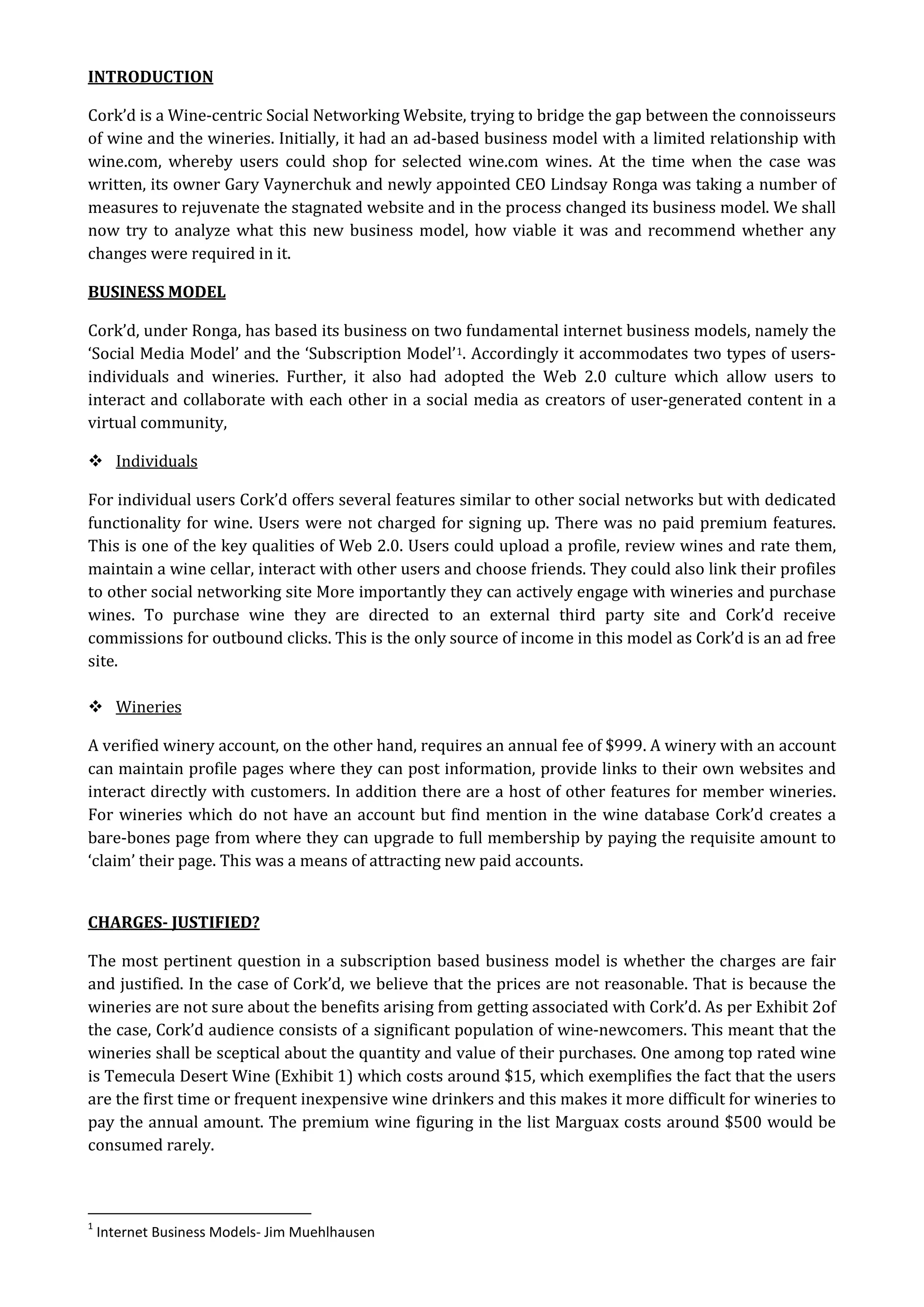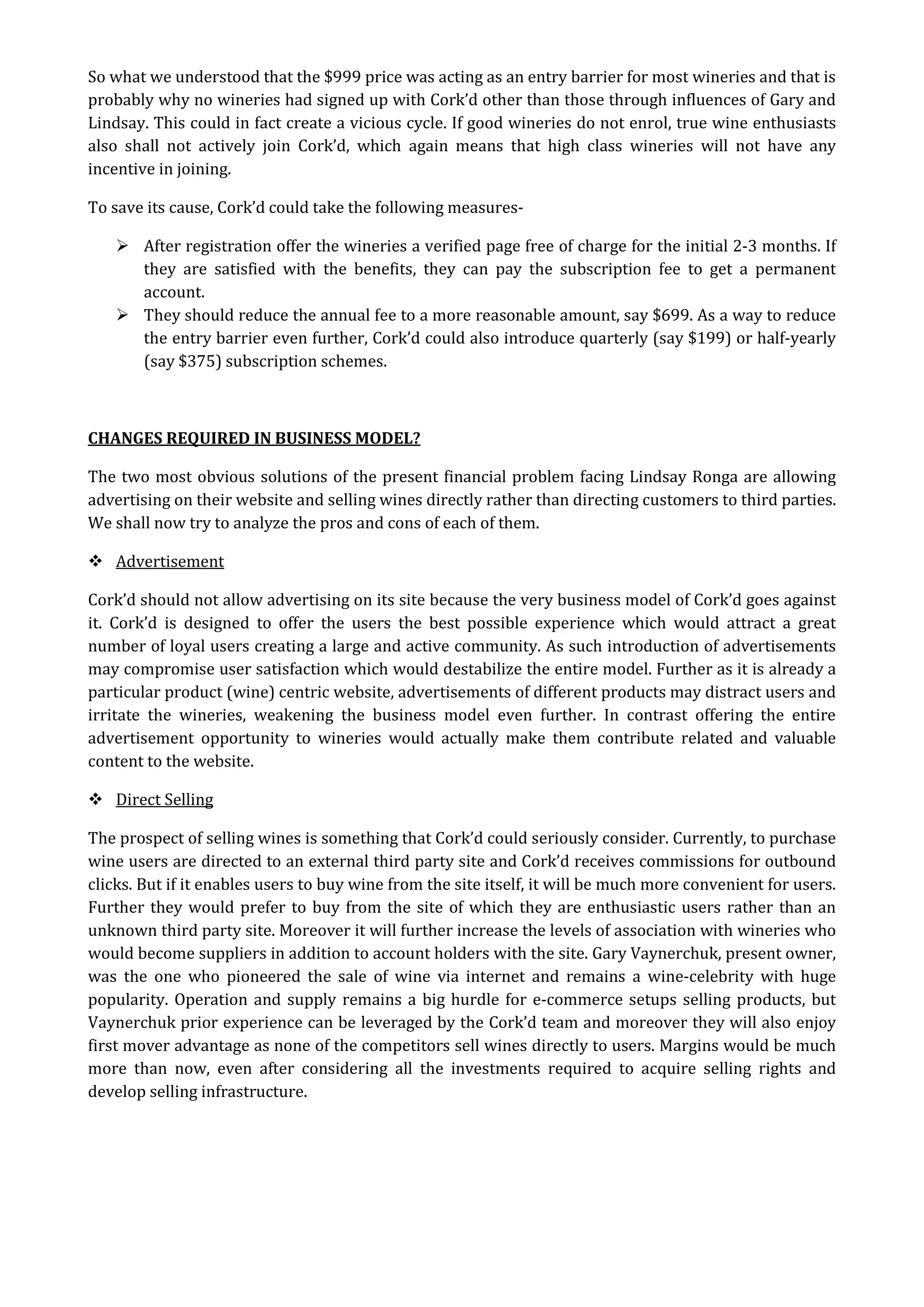Cork'd is a wine-focused social networking site that connects wine enthusiasts with wineries. It recently changed its business model to focus on social media and subscription models. Under the new model, individual users can interact for free while wineries must pay an annual $999 fee for a verified profile and interaction capabilities. However, the high fee likely deters most wineries from signing up. The business model could be improved by lowering fees, offering free trial periods for wineries, and allowing direct wine sales through the site.


